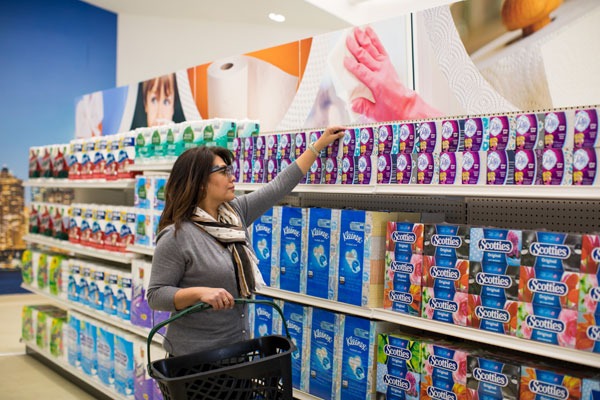Executive Guide To Packaging Research and Design
Chapter 1:
Packaging Research and Design
Executive Guide to Shopper Insights Research
Packaging design is playing an increasingly important role in the marketing mix. With ever increasing media fragmentation, abundance of choice, rapidly changing environment and growth of online shopping, packaging is the one element with the opportunity to achieve 100% reach with your consumers.
Why do marketers invest in packaging research and design?
With all the focus on digital media these days, why do marketers still invest to research package design? Despite the massive growth in Amazon and other e-commerce channels, the majority of CPG sales still occur in retail stores with physical products on shelves that consumers look at and touch as part of their buying decision. However, it’s also important to test how your package performs for e-commerce.
Whether you are developing packaging for an innovation, re-vitalizing a tired brand, launching a line extension or executing a new brand strategy, packaging research adds value and delivers ROI throughout the process. This includes applying package design research at the product development stage all the way through to confirming the best final package before you launch. Packaging insights can increase shelf impact to break through the clutter, help prioritize key messaging, ensure fit with brand image and improve functionality.
Like other types of marketing research, packaging research must take into account both conscious and subconscious decision making. It should combine what consumers say they will do with what they actually do. Some marketers try to test packaging in focus groups (although they tell themselves it’s just to get a directional read). The final packaging should be tested in real life situations – at home, away from home, in-store and online. This will ensure your packaging is optimized to best meet consumer needs and improve business results.
How can you optimize packaging design to improve your sales?
Here we will share some of our learning on packaging research and describe how the right insights gathered from both traditional and more advanced research techniques can optimize your package to drive business results.
In order to be effective, your packaging must appeal to both shoppers and consumers. Let’s take a closer look at the distinction between the two groups and the key elements to consider when trying to connect with both.
Effective packaging research with shoppers and consumers
The best packaging research will identify insights from both a shopper and consumer viewpoint. On average, a shopper spends only 1.9 seconds at the shelf. So, for shoppers, your package must breakthrough and be easy to find. This can be achieved through visual cues – color, brand or shape recognition. It must clearly communicate desired imagery and meaningful benefits.
From a consumer viewpoint, consider other elements. For one, the functionality of packaging. Is it easy to open, store and handle? Consider pet food for a large dog. Does your package fit into their car? Do they have room to store it at home? Or, for an ingredient product, are instructions easy to read? Are the packaging materials appropriate for the product and category?
Depending on the category and target market, the image conveyed by your packaging will be important. Is it for the shopper or someone else in the household? Is it a gift, for example, boxed chocolates, where a higher quality item is desired?
On-shelf impact
Always evaluate packaging in live or life-sized virtual shopper settings. Shopper mindset and competitive context will influence research results.

Packaging Clutter
Ensure the important packaging elements are being seen based on eye tracking. Ideally, focus packaging graphic design efforts on 3 key elements per package.

Functionality
Does your package design take into account where and how consumers will use your product or how it will be stored? Consider a product for an aging consumer where the print size or color combinations make it hard to read.
Overall, ensure your product stands out on a busy shelf, connects with consumers through visuals and clear messaging and improves the overall experience of your brand. Doing so you will successfully encourage trial and repeat purchase.
In Chapter 2 we look at what kinds of companies are using packaging design research – and it’s not limited to just CPG firms anymore.

